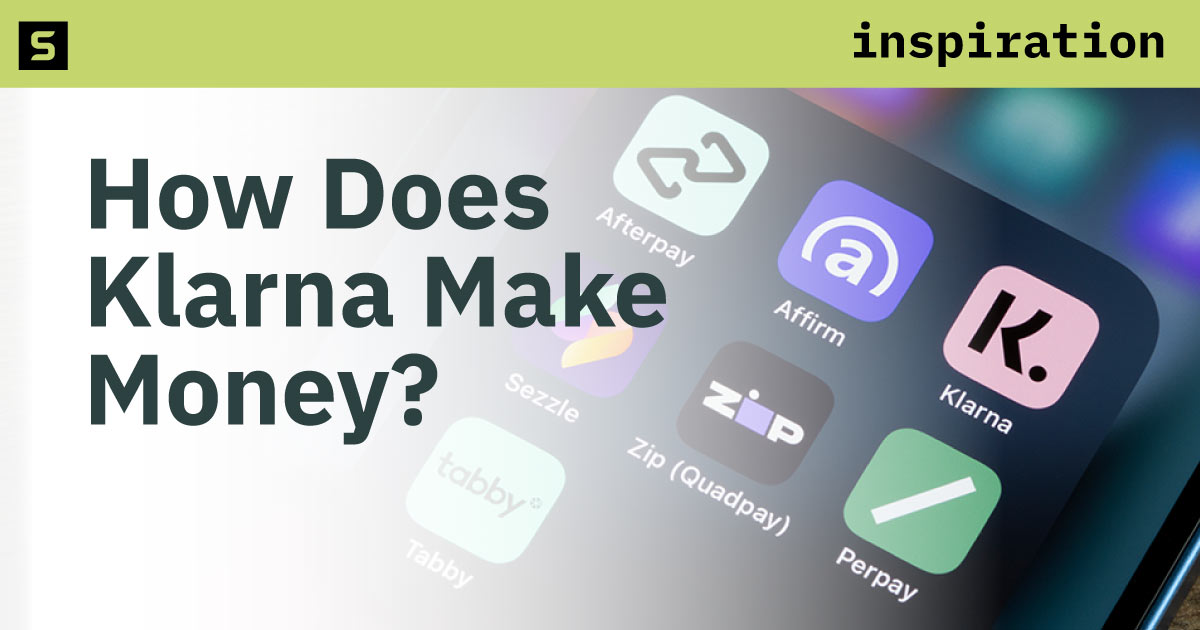Klarna is a fintech company that allows customers to buy products now and pay for them later — without a credit card. The company makes money primarily through merchant fees, but also has expanded into banking, shopping apps, and financial services.
Founded in 2005, Klarna has grown from a simple payment processor into a global financial technology company valued at more than $14.6 billion with approximately 85 million active customers worldwide. This article will break down exactly how Klarna generates revenue, explore its multiple revenue streams, and examine what startup founders can learn from its growth strategy.
1. Merchant Fees
At the core of Klarna’s business model are merchant fees, which constitute the largest portion of its revenue. When a customer makes a purchase using Klarna’s buy now, pay later (BNPL) service, the merchant pays Klarna a percentage of the transaction value — typically 3% to 6%. This is significantly higher than traditional credit card processing fees, which average 1.5% to 3%.
Why do merchants agree to these higher fees? The answer lies in the value proposition: Klarna has demonstrated that its service can increase average order values by 20% to 30% and improve conversion rates by up to 44%. For many retailers — especially those in the ecommerce space — these benefits more than justify the higher processing fees.
2. Consumer Interest and Late Fees
While Klarna’s “Pay in 4” option (splitting a purchase into four interest-free payments) doesn’t generate direct interest revenue, the company does earn money from other consumer-facing products. These include:
- Lon-term financing options (six to 36 months) that carry interest charges;
- Late payment fees when customers miss payment deadlines; and
- Interest on longer-term financing products.
Klarna has made efforts to minimize its reliance on late fees, however, which has helped it maintain a more positive reputation than traditional credit providers.
3. The Klarna Card
In 2022, Klarna made a strategic move that surprised many in the fintech world: the company launched a physical payment card. Why? Because while online shopping was booming, nearly 80% of retail transactions still happened in physical stores. The Klarna Card cleverly bridges this gap, bringing the company’s popular “pay later” feature to brick-and-mortar shops.
The card works like a regular credit card, but follows Klarna’s BNPL model. When a customer makes a purchase, they can split the payment into four parts through the Klarna app. This expansion has created several new revenue streams:
- Interchange fees (1% to 3%) from every card transaction;
- Monthly subscription fees that range from $3.99 to $7.99 in certain markets;
- Foreign transaction fees when customers use the card abroad; and
- ATM withdrawal fees for cash advances.
The genius of the Klarna Card lies in how it solves the “everyday BNPL” problem. Instead of being limited to specific online stores, customers can now use Klarna’s payment options anywhere that accepts credit cards.
4. The Shopping App
Klarna has successfully transformed its core payment processing service into a comprehensive shopping platform with over 18 million monthly active users. This expansion mirrors the evolution of other successful tech companies that grew beyond their initial offerings to capture more market value.
Klarna’s shopping app has multiple revenue streams, including:
- Premium placement fees from merchants seeking increased visibility;
- Targeted advertising revenue from retailers accessing Klarna’s demographic;
- Affiliate commissions on product discoveries and purchases; and
- Advanced analytics packages that provide merchants with user insights and behavioral data.
This marketplace model creates strong network effects: increased user adoption attracts more merchants that leads to expanded product offerings and competitive pricing, which in turn drives further user growth.
5. Banking Services
Klarna’s entry into banking services represents a strategic expansion of its financial technology infrastructure. By leveraging its existing customer relationships and technical capabilities, Klarna has built a comprehensive banking platform in Europe that includes:
- Competitive, high-yield savings accounts;
- Zero-fee checking accounts;
- Integrated debit card services; and
- Cost-effective international transfers.
This banking division generates revenue through multiple channels, including:
- Interest rate differentials between customer deposits and lending;
- Foreign exchange and international transfer fees;
- Premium service fees; and
- Debit card transaction revenue.
6. The Data Advantage
Klarna’s competitive edge extends beyond its consumer-facing services to its sophisticated data infrastructure. The company has built a comprehensive dataset of consumer behavior, payment patterns, and shopping preferences that drives both operational efficiency and revenue growth.
This data infrastructure enables Klarna to:
- Develop sophisticated credit risk assessment models;
- Implement advanced fraud prevention systems;
- Design data-driven shopping experiences; and
- Create high-value merchant analytics solutions.
The company’s risk assessment capabilities are particularly noteworthy. Klarna analyzes multiple factors during transactions, including shopping patterns, cart composition, and user behavior metrics, to make accurate credit decisions. This sophisticated approach allows for higher approval rates while maintaining industry-leading default rates.
Lessons for Startup Founders
Analyzing Klarna’s evolution from a simple payment solution to a global fintech platform provides valuable insights for startup founders. The company’s journey demonstrates how to scale effectively while maintaining core value propositions, navigate regulatory challenges in the financial services industry, and build sustainable revenue streams. Here are the key strategic lessons from Klarna’s success:
- Start focused, then expand. Klarna began with a single, clear value proposition (providing a smooth checkout process) before expanding into additional services.
- Build multiple revenue streams. While merchant fees remain core to the business, Klarna has successfully diversified its revenue sources.
- Create network effects. The shopping app creates a virtuous cycle where more users attract more merchants and vice versa.
- Use data strategically. Klarna’s use of transaction data to improve services and reduce risk shows how data can be a competitive advantage.

